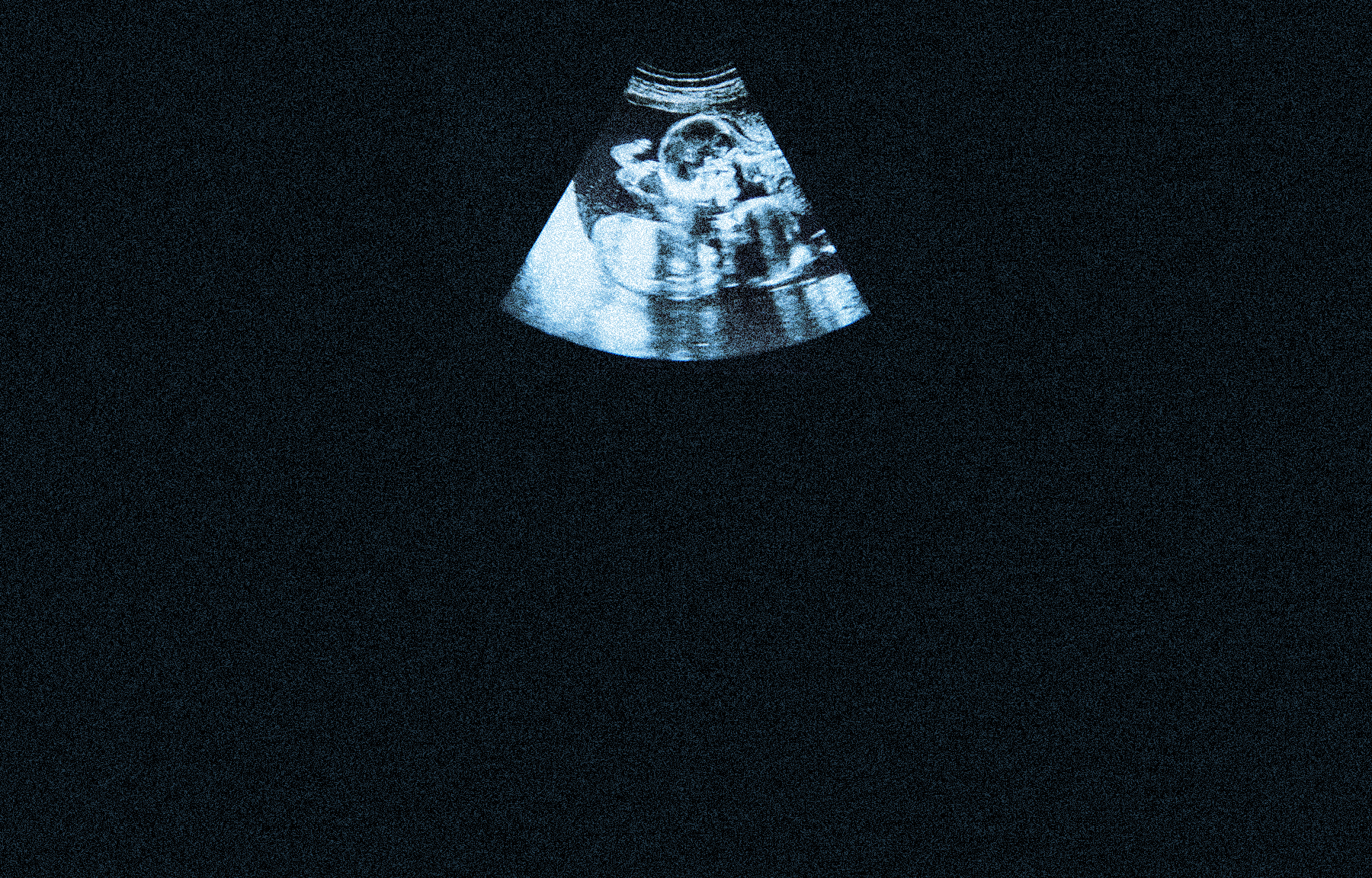The double disadvantage of twin pregnancies in America
Birth in America is over-medicalized. It's even worse when you're having twins.


I found out I am having twins in perhaps the most gradual way it is possible to learn there are two strangers growing inside you.
After my husband and I decided to have children, I signed up as a patient with a lovely, midwife-managed birth center just two miles from my home. I called the midwives when I got a positive pregnancy test, and I called the midwives when — home alone and panicking on a Sunday night — I worried I was having a miscarriage.
They decided it would be wise to come in for a pair of blood tests to confirm I was still pregnant. If my levels of a hormone called hCG rose from one test to the next, it would be a strong indication all was well. But before I could take the second test, the results of the first came in, and my hCG levels were high. Very, very high.
The Week
Escape your echo chamber. Get the facts behind the news, plus analysis from multiple perspectives.

Sign up for The Week's Free Newsletters
From our morning news briefing to a weekly Good News Newsletter, get the best of The Week delivered directly to your inbox.
From our morning news briefing to a weekly Good News Newsletter, get the best of The Week delivered directly to your inbox.
"There are a few things that could be happening here," the midwife told me over the phone. "It could be you just have high hormone levels. But it could also be an ectopic pregnancy, or it could be twins." An ectopic pregnancy is when the fertilized egg implants outside the uterus, typically in a fallopian tube. It's always nonviable, can cause life-threatening hemorrhaging, and may be treated with surgery, depending on how far growth has progressed.
So maybe I was going to die, maybe my hormones were just being a little weird, or maybe it was twins!
We scheduled an early ultrasound to sort things out, and a few days later I watched as a shape like owl eyes appeared among the unintelligible gray static that is apparently my innards. In the eyes, two fuzzy white pupils, each with its own heart beat zipping along at 176 beats per minute. Two yolk sacs, two placentas, two babies. Twins.
From that moment of discovery, two parallel stories of having twins began to emerge.
A free daily email with the biggest news stories of the day – and the best features from TheWeek.com
One is a tale of excitement. Everyone is excited about twins. Even people who don't care about babies get a pang of interest when there are two of them. Relatives paw through the family tree to shake out stories of twins past (fraternal twins like mine can run in families, and it turns out I have twin cousins on both sides). One relative told me she was jealous of my twins because she always wanted to be a twin herself. Another literally screamed at the news. A third was sure we were joking, glancing around the room for confirmation the slip of ultrasound paper she held was not, in fact, an elaborate prank.
The other story is one frustration. That lovely birth center? I can't go there anymore. When we assumed there was just one baby, I may have been the lowest risk patient on their roster — "You really have no medical history, huh?" one midwife observed as she went through my file — but with twins, I was immediately shunted into the high risk category.
At first I assumed the ban on twin deliveries was unique to this facility. Other birth centers would be less convenient, a little farther from my house, but I resigned myself to switch. Instead, I got rejections everywhere I inquired. Finally, one birth center volunteered information that made me realize exactly how different this pregnancy would be from what I'd anticipated. "We can provide prenatal care for twins," the center's manager explained, "but unfortunately, due to our accreditation in Minnesota, twin births cannot take place in a birth center."
It wasn't just my birth center. No birth center would help me give birth.
All my plans and preparation whipped out the window. In their place, a choice between two extremes: home birth with one of the few local midwives who would attend a twin delivery, an arrangement that would not be covered by my insurance and could devolve into a surprise trip to the hospital — or a planned hospital birth, where I'd likely be pushed to preemptively schedule a cesarean section, and even a vaginal delivery would take place in the operating room, a prospect that gives me visions of protesting to scalpel-wielding surgeons that it's still too soon to cut.
My imagination may be running a little wild there, but not by much. The last century has seen birth in the United States become an increasingly over-medicalized process, with labor treated much like an illness to be cured in as little time as possible.
Where once American women overwhelmingly delivered in their own homes, attended by midwives, today 98 percent give birth in a hospital setting. The World Health Organization (WHO) has concluded there is "no justification for any region to have a caesarean section rate higher than 10-15 percent," but the American cesarean rate is more than twice that: As of 2016, the most recent year for which data is available, 32 percent of babies delivered in the United States are born by c-section.
Of course, there are times when a c-section is medically necessary, and some births simply will not be safe for mother and baby (or babies) alike without the resources only a hospital can offer. I regularly tell my husband how happy I am to have modern conveniences that make my life historically safe and easy: the internet, the washing machine, and my beloved robot vacuum have all inspired such declarations. As an expectant mother I thankfully add medical advances to that list.
The trouble with the way birth is handled in America is not the use of these medical resources but their misuse and overuse.
Consider that 32 percent c-section rate. Why is it so high? A few women do request elective c-sections, following in the footsteps of celebrities who have thus scheduled their deliveries to avoid "surprises" or pain. But national survey data suggests mother-initiated elective c-sections are extremely rare among the non-celebrity population. Moms are not the ones driving this shift.
The culprit rather is an effort by medical providers and insurance companies to make birth quick, predictable, scheduled, and safe — from litigation at least as much as from actual physical danger. "The medical-legal climate on labor floors became such that many doctors no longer went out of their way to convince a woman to have a vaginal delivery, particularly if she had a c-section in the past," says Dr. Peter Bernstein, a maternal-fetal medicine specialist at the Bronx's Montefiore Medical Center.
Today about one in four women in America with low-risk pregnancies and full-term, singleton babies in position for a normal vaginal delivery will undergo a cesarean, and the greatest determining factor of whether an expectant mother will have a c-section is not her choice or the risks of her pregnancy, but where she seeks maternity care. In some hospitals, the c-section rate for low-risk pregnancies is as high as 70 percent.
For many women, the path to c-section involves an escalating cycle of medical intervention. It often begins with induction, in which labor is hastened or even forced though the use of medication, rupturing the amniotic sac (when this happens of its own accord, it's called your water breaking), or even inserting a gradually inflating balloon into the cervix to help soften it for delivery.
Inductions happen for lots of different reasons. Some are planned because the pregnancy has passed 42 weeks, at which point the placenta begins to degrade and the baby may become quite large. Others may address more unusual medical conditions, as in this account from a mother scheduled for induction at 34 weeks so she can safely proceed with cancer treatment.
But inductions also happen as a matter of logistical convenience — "such as living far away from the hospital," notes a guide from the American College of Obstetricians and Gynecologists — or because labor is judged to be moving too slowly. Drugs like Pitocin are used to increase the rate and strength of contractions, which in turn can make the pain of delivery significantly more intense than it otherwise would be. Pain relief, most notably an epidural, quickly becomes necessary. But the pain medicine can act to slow labor, which necessitates more Pitocin, which means more pain, which means more epidural.
"The result is a labor that is more difficult to manage," explains Dr. Judith A. Lothian in The Journal of Perinatal Education, as "the uterine muscle never totally relaxes between contractions, increasing stress on both the uterus and the baby." Soon, an emergency cesarean may be required to deal with emerging complications, like the fetal heart rate beginning to drop.
After delivery, induced labor is correlated with additional complications, including a greater need for NICU care for infants. Birth without the normal release of hormones like oxytocin, which occurs in spontaneous labor, can also correlate with difficulty in breastfeeding and mother-child bonding, as well as an increased risk of postpartum depression. A c-section is a major surgery that requires substantial recovery time and makes future births more complicated. Epidurals can also have long-term side effects, even permanent nerve damage.
"Step by step, one intervention leads to a series of interventions, and the net result is the mother finally ends up with a cesarean, and everybody says, 'Thank God we were able to do all these interventions to save your baby,'" says Dr. Eugene Declercq, a professor of obstetrics and gynecology at Boston University's School of Medicine. "The fact of the matter is if they didn't start the cascade of interventions, none of that would have been necessary."
Declercq made his comments in The Business of Being Born, a 2008 documentary on the evolution and current state of birth care in the United States. Business makes a compelling case that most American maternity care is thoroughly dysfunctional, operating on perverse incentives and sticking mothers with high bills and birth experiences more traumatic and riskier than they need to be. The United States has the highest maternal mortality rate in the developed world, and it's climbing while rates in comparable nations drop. Our neonatal mortality rate, defined as infant deaths within 28 days of birth, is similarly high.
It would be irresponsible to attribute these differences to a single cause, but it is indefensible to ignore conspicuous contributing factors, like how births in these comparable nations tend to proceed with fewer and less invasive interventions; frequently take place outside of the hospital in home or birth center settings; and are often attended by midwives rather than surgeons.
The last decade has seen a renewed interest in less medicalized birth options, fueled by awareness projects like Business, the high monetary price of an intervention-heavy delivery, and even the popularity of the BBC's Call the Midwife (which I have been binging of late as a sort of DIY exposure therapy). A small but growing subset of America's expectant mothers are exploring their options for non-hospital deliveries, and many medical professionals, too, are working to lower c-section rates.
Unless it's twins.
When there's a second baby, all the troubling over-medicalization trends we see in singleton births are multiplied. Fully 75 percent of twin births in America are cesareans, more than double the 32 percent average. If one or more of the babies is breech, that rate jumps to 92 percent. (It is not unusual for one twin to present head up at the start of delivery and the other head down, though in a vaginal birth, the breech twin may flip or be moved into a normal, head-down position after the first twin is delivered.)
Some disparity between the intervention rate for twins and singletons is to be expected. Two babies are riskier than one (as are three or four, though higher order multiples births are so rare that comprehensive statistics are few). But there is good reason to believe that just as with single births, the frequency and degree of interventions in twin births in America has increased well past what is medically necessary.
As recently as 1995, the twin c-section rate was 53 percent. Between 1995 and 2008, that rate increased by about 5 percent every single year. Just like the broader spike in c-section use in the United States, this shift is not attributable to safety.
A landmark 2013 study published in The New England Journal of Medicine found planned cesarean sections for twin deliveries were no safer than planned vaginal births. "Studies have suggested that maybe cesarean delivery is the best way, but there's no evidence to support the swing to cesarean birth," says Dr. Jon Barrett, head of the high-risk obstetrics team at Sunnybrook Health Sciences Center in Toronto, Canada, and the 2013 study's lead author.
Twin pregnancies have become more common in recent decades thanks to rising use of fertility treatments and higher average maternal age, but because the "pendulum has swung too far to cesarean," Barrett says, "now we may not have enough skilled practitioners to do these more difficult vaginal births." OB/GYNs may enter practice having never observed or performed a spontaneous vaginal twin delivery, let alone developed the expertise to approach the situation with confidence. Planned cesareans skirt that problem — but they also introduce a hydra of other hazards.
For expectant mothers of twins, Barrett casts his study results as a guidepost to informed deliveries whose methods aren't determined by unnecessary fear. "Realize that you have a choice and find a [birth] center or an obstetrician who is willing to [honor] your choice," he says. "If they can't offer vaginal delivery in their hospital, they should refer you to a center that can, rather than just diverting you to a cesarean delivery."
This is what I have tried to do, though the "no twins in the birth centers" rule has proven a serious obstacle. (Aly Folin, president of the Minnesota Council of Certified Professional Midwives, explained this ban comes not from state law but the Commission for the Accreditation of Birth Centers, a national accrediting organization which requires freestanding birth centers to transfer all expectant mothers of multiples to hospital care.)
Though I might have chosen it for a singleton birth, I opted against home delivery for twins. I'm not worried about the home aspect of it, but that if I did require a transfer to hospital, I'd have little to no control over where and under whose care I'd land. An unplanned trip to a local hospital during twin delivery all but ensures my births would become part of that 75 percent c-section statistic.
Instead, on a recommendation from that original birth center, I'm working with an obstetrician in the next state over. My twins will technically be native Wisconsinites, assuming all goes as planned, because the 45-minute drive from the Twin Cities is worth it to me to see a doctor who specializes in successful vaginal deliveries for twins, even with breech presentations. He works in a small hospital that has fashioned itself into something of a destination for mothers like me, offering a birth center-like environment — averse to unnecessary interventions and happy to operate on whatever pace natural labor sets — within hospital walls.
The distance aside, I'm lucky to have this option, but too many of America's growing population of mothers of twins will not be so fortunate. Their pregnancy experience will be one of over-hyped risk and ever-narrowing options, leading inexorably to the surgeon's table for three in every four. It doesn't have to be that way.
Bonnie Kristian was a deputy editor and acting editor-in-chief of TheWeek.com. She is a columnist at Christianity Today and author of Untrustworthy: The Knowledge Crisis Breaking Our Brains, Polluting Our Politics, and Corrupting Christian Community (forthcoming 2022) and A Flexible Faith: Rethinking What It Means to Follow Jesus Today (2018). Her writing has also appeared at Time Magazine, CNN, USA Today, Newsweek, the Los Angeles Times, and The American Conservative, among other outlets.
-
 ‘City leaders must recognize its residents as part of its lifeblood’
‘City leaders must recognize its residents as part of its lifeblood’Instant Opinion Opinion, comment and editorials of the day
-
 10 upcoming albums to stream during the winter chill
10 upcoming albums to stream during the winter chillThe Week Recommends As the calendar turns to 2026, check out some new music from your favorite artists
-
 Kristi Noem might not be long for Trumpland
Kristi Noem might not be long for TrumplandIN THE SPOTLIGHT The Homeland Security secretary has been one of the most visible and vocal architects of Trump’s anti-immigration efforts, even as her own star risks fading
